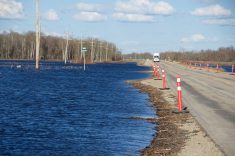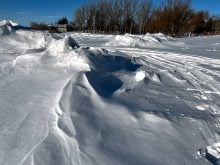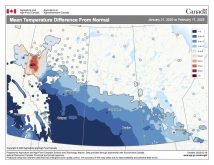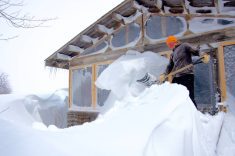How Manitoba’s mounds of snow will translate to floods and soil moisture remains to be seen, but they still represent a remarkable turnaround from last year’s severe drought.
“The moisture situation has improved unbelievably,” said Trevor Hadwen, an agroclimate specialist with Agriculture Agri-Food Canada (AAFC). He spoke with the Co-operator on March 15.
The magnitude of runoff in Manitoba’s rivers will be highly weather-dependent, the province said in its flood forecast released March 17.
Read Also

Seeding Indigenous agricultural prosperity
National Circle for Indigenous Agriculture and Food says Indigenous agricultural success needs strong relationships.
Moderate to major flooding is likely in most southern Manitoban basins, the report said.
“Due to above normal to extremely above normal winter precipitation,” the Red River and its tributaries are at a high risk of moderate to major flooding, the report says.
The Assiniboine River and its tributaries, including the Souris River basin are at a high risk of moderate flooding.
The risk of flooding in the Interlake and northern Manitoba is low.
Nearly the entire Red River basin received abnormal amounts of snow, as did the western part of the Shellmouth basin and the Saskatchewan River basin.
Some American portions of the Red River basin received 200 per cent of normal snowfalls, the report said.
All that moisture coming from the U.S. is one of the reasons for flooding concerns said Hadwen.
A few consecutive dry years have demolished soil water reserves. Replenishing that will be important, but it’s not the only need.
“We want water to get into those reservoirs and those dugouts on the farm,” Hadwen said.
Filling reservoirs and replenishing soil moisture take two different mechanisms, he said. A slow melt will benefit ground water, while a quicker melt will help put water in streams and lakes.
“We can have spring flooding and drought at the same time,” Hadwen said.
The best-case scenario would be a bit of a delay in the melt, then a quick melt to fill lakes, streams and reservoirs—followed by healthy spring precipitation to add soil moisture, Hadwen said.
The Red River Floodway is expected to be operated under all weather conditions to reduce water levels in Winnipeg, the province said.
The Portage Diversion may be operated minimally to prevent ice jamming on the Assiniboine River east of Portage la Prairie and to control river levels in Winnipeg as needed.
The Shellmouth Reservoir is being operated to reduce flooding downstream on the Assiniboine River.
















